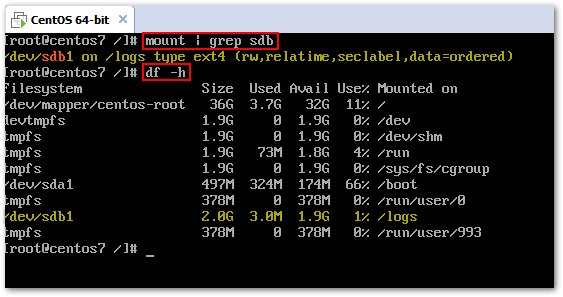

For more information about disk encryption, see Azure Disk Encryption for Linux VMs.If you need additional storage, you can also add data disks to a Linux VM.The following example output shows the data drive /dev/sdc1 is now 200 GB: Filesystem Size Used Avail Use% Mounted on To verify the data disk has been resized, use df -h. Mount the partition to the desired location, such as /datadrive: sudo mount /dev/sdc1 /datadrive Resize the filesystem with resize2fs: sudo resize2fs /dev/sdc1 With the partition resized, verify the partition consistency with e2fsck: sudo e2fsck -f /dev/sdc1 Enter the partition number, 1, and a size for the new partition: (parted) resizepart Sector size (logical/physical): 512B/4096BĬ. Welcome to GNU Parted! Type 'help' to view a list of commands. The output is similar to the following example, which shows the underlying disk is 215 GB: GNU Parted 3.2 View information about the existing partition layout with print. Use parted to view disk information and resize the partition: sudo parted /dev/sdc Next to the instance that has the new attached disk, click the. If the disk is already mounted, unmount it: sudo umount /dev/sdc1ī. Resize the file system and partitions In the Google Cloud console, go to the VM instances page. You can see the public IP address of your VM with az vm show: az vm show -resource-group myResourceGroup -name myVM -d -query -output tsvĮxpand the underlying partition and filesystem.Ī. SSH to your VM with the appropriate credentials. To use an expanded disk, expand the underlying partition and filesystem. The following example starts the VM named myVM in the resource group named myResourceGroup: az vm start -resource-group myResourceGroup -name myVM For a table of the available managed disk sizes and tiers, see Azure Managed Disks Overview - Pricing and Billing. When you expand a managed disk, the updated size is rounded up to the nearest managed disk size.

In the following samples, replace example parameter names such as myResourceGroup and myVM with your own values. If you do not already have a VM that you can use, see Create and prepare a VM with data disks. This article requires an existing VM in Azure with at least one data disk attached and prepared. Make sure that you have the latest Azure CLI installed and are signed in to an Azure account by using az login. Or an Azure Resource Manager template with an API version that's or newer.Not supported for Ultra disks, Premium SSD v2 (preview) disks, or standard HDDs.If a disk is already greater than 4 TiB, you can expand it without deallocating the VM. If a disk is 4 TiB or less, you can't expand it beyond 4 TiB without deallocating the VM.This feature has the following limitations: You can now expand your managed disks without deallocating your VM. Expand an Azure Managed Disk Expand without downtime For more information, see the Azure Backup quickstart. Always make sure that your filesystem is in a healthy state, your disk partition table type will support the new size, and ensure your data is backed up before you perform disk expansion operations.


 0 kommentar(er)
0 kommentar(er)
